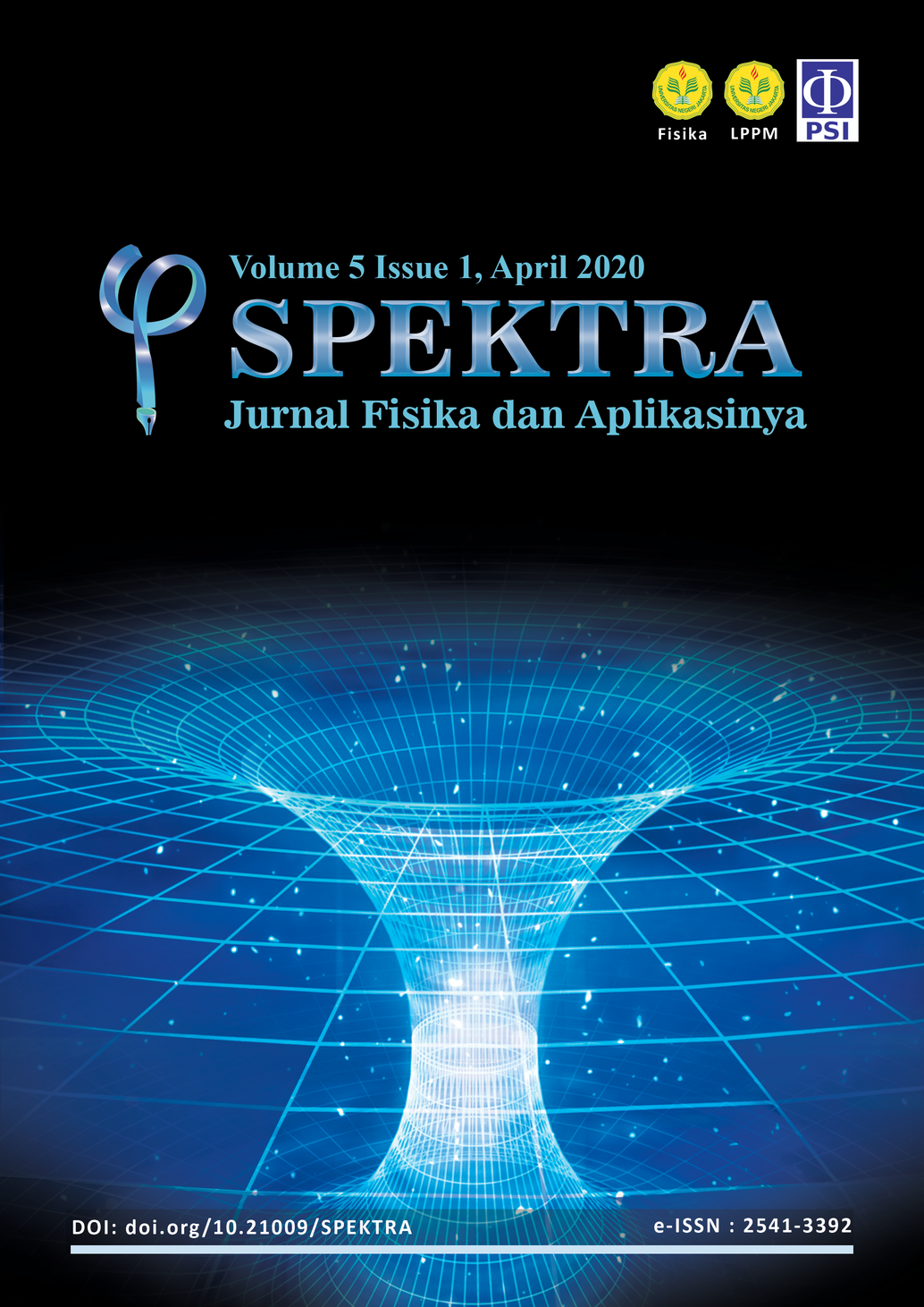ANALYSIS OF THE EFFECT OF CARE DOSE 4D SOFTWARE USE ON IMAGE QUALITY AND RADIATION DOSE ON THE CT SCAN ABDOMEN
DOI:
https://doi.org/10.21009/SPEKTRA.051.04Keywords:
CT Number, CTDIvol, noise, noise power spectrumAbstract
The CT Scan is the most significant contributor to radiation dose on radiological examination, although the frequency of the examination is far below other modalities. In order to control this radiation dose, manufactures of CT Scan have equipped their units with built-in software called Automatic Exposure Control (AEC). This study aims to analyze the effect of AEC software, CARE Dose 4D, on image quality, and CTDIvol. Objects used in this study were three water phantoms, each with a diameter of 165 mm, 230 mm, and 305 mm. The image quality-analyzed was CT Number and noise. Measurement of image quality was carried out following Bapeten's provisions. Noise Power Spectrum (NPS) graphics were also used to further observes noise texture. The CT Number accuracy, CT Number, and noise uniformity obtained with and without CARE Dose 4D, on the three phantoms were still within Bapeten's threshold. This indicates that the use of CARE Dose 4D can still image a homogeneous object accurately. The results of the NPS curve showed that the two modes, in three phantoms, were having the same noise texture. The NPS curves also showed that the use of CARE Dose 4D produces higher noise than the non-CARE Dose 4D mode. Meanwhile, there were significant differences from the CTDIvol obtained from the two modes. The use of CARE Dose 4D software reduced dose of up to 54.34%. From this, the use of CARE Dose 4D software can reduce the radiation dose while maintaining image quality.
References
[2] C. H. McCollough et al., “Strategies for Reducing Radiation Dose in CT,” Radiologic Clinics of North America, 2009.
[3] Fajri et al., “Analisis Perbandingan Parameter dan Profil Dosis Menggunakan Phantom Standard dan Tidak Standar,” Universitas Diponegoro, Semarang, Dikutip: https://www.youngster.physicsjurnal.com. Diakses tanggal 19 Mei 2019.
[4] B. F. Wall, “Ionising radiation exposure of the population of the United States: NCRP Report No. 160,” Radiat. Prot. Dosimetry, 2009, vol. 136.
[5] Shawna L. et al., “CARE Dose 4D CT Automatic Exposure Control System: Physics Principles and Practical Hints. Radiological Society of North America,” Scientific Assembly and Annual Meeting, November 25 - November 30, 2007 ,Chicago I.L., 2007. http://archive.rsna.org/2007/5011233.html Accessed February 28, 2020.
[6] C. H. Lee et al., “Radiation Dose Modulation Techniques in the Multidetector CT Era: From Basics to Practice,” Radio Graphics, 2008, vol. 28.
[7] Justin B. Solomon et al., “Relating Noise to Image Quality Indicators in CT Examinations With Tube Current Modulation,” AJR, 2013, vol. 200.
[8] G. R. Iball et al., “Assessment of tube current modulation in pelvic CT,” The British Journal of Radiology, 2006, vol. 79.
[9] M. Soderberg and M. Gunnarsson, “Automatic exposure control in computed tomography – an evaluation of systems from different manufacturers,” Acta Radiologica, 2010, vol. 51.
[10] K. K. Lau et al., “Imaging Techniques in Improving Image Quality of CT Abdomen: What Are the Latest?”, The Royal of Australian and New Zealand College of Radiologists, 2016,
https://epos.myesr.org/ranzcr/viewing/?module=viewing_poster&pi=135764, Accessed April 5, 2020.
[11] M. Bruesewitz et al., “Smart mA – Automatic Exposure Control (AEC): Physics Principles and Practical Hints Automatic Exposure Control (AEC) Systems in CT Using AEC to Prescribe the Desired Image Quality AEC and Image Quality,” Med. Educ., 2008.
[12] S. S. Mannudeep K. Kalra et al., “Techniques and Applications of Automatic Tube Current Modulation for CT1 Introduction,” RSNA, 2004.
[13] C. H. McCollough and J. M. K. Michael R. Bruesewitz, “CT Dose Reduction and Dose Management Tools: Overview of Available Options,” RSNA, 2006, vol. 26.
[14] J. T. Bushberg et al., “The Essential Physics of Medical Imaging,” 2012, vol. 30, no. 7.
Downloads
Published
How to Cite
Issue
Section
License
SPEKTRA: Jurnal Fisika dan Aplikasinya allow the author(s) to hold the copyright without restrictions and allow the author(s) to retain publishing rights without restrictions. SPEKTRA: Jurnal Fisika dan Aplikasinya CC-BY or an equivalent license as the optimal license for the publication, distribution, use, and reuse of scholarly work. In developing strategy and setting priorities, SPEKTRA: Jurnal Fisika dan Aplikasinya recognize that free access is better than priced access, libre access is better than free access, and libre under CC-BY or the equivalent is better than libre under more restrictive open licenses. We should achieve what we can when we can. We should not delay achieving free in order to achieve libre, and we should not stop with free when we can achieve libre.
 SPEKTRA: Jurnal Fisika dan Aplikasinya is licensed under a Creative Commons Attribution 4.0 International License.
SPEKTRA: Jurnal Fisika dan Aplikasinya is licensed under a Creative Commons Attribution 4.0 International License.
You are free to:
Share - copy and redistribute the material in any medium or format
Adapt - remix, transform, and build upon the material for any purpose, even commercially.
The licensor cannot revoke these freedoms as long as you follow the license terms.

 E-ISSN 2541-3392
E-ISSN 2541-3392  Focus & Scope
Focus & Scope  Editorial Team
Editorial Team  Reviewer Team
Reviewer Team  Author Guidelines
Author Guidelines  Article Template
Article Template  Author Fee
Author Fee  Publication Ethics
Publication Ethics  Plagiarism Policy
Plagiarism Policy  Open Access Policy
Open Access Policy  Peer Review Process
Peer Review Process  Retraction & Correction
Retraction & Correction  Licensing & Copyright
Licensing & Copyright  Archiving & Repository
Archiving & Repository  Contact
Contact  Mendeley
Mendeley 

